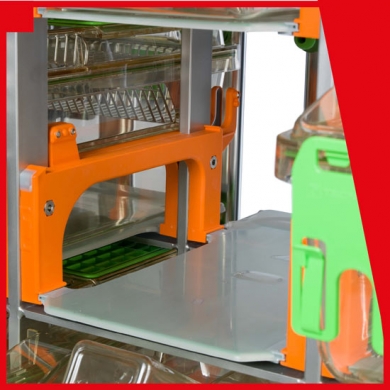
The current version of the Tecniplast website doesn't match your region. Please visit your local website to find information and offerings specific to your country.

The current version of the Tecniplast website doesn't match your region. Please visit your local website to find information and offerings specific to your country.


DVC® proves itself to be effective in identifying mouse cages with patterns of high activity levels, signaling possible aggression incidences, thus potentially allowing for early intervention and consequently improving animal welfare
An interesting article entitled “Effect of Environmental Enrichment on Aggression in BALB/cJ and BALB/cByJ Mice Monitored by Using an Automated System” has been published in the recent Journal of the American Association for Laboratory Animal Science (Vol 57, No 3 - 2018 May 2018) by the American Association for Laboratory Animal Science.
This article, written by Jareca M Giles, Julia W Whitaker, Sheryl S Moy, and Craig A Fletcher (Division of Comparative Medicine and Carolina Institute for Developmental Disabilities and Department of Psychiatry, University of North Carolina at Chapel Hill,Chapel Hill, North Carolina) focuses its attention on the aggression among mice and how it remains a common undesirable problem in laboratory settings, and animal welfare and scientific outcomes may become compromised depending on the severity of aggression.
This study evaluated the effect of cage enrichment comprising a bi-level, mounted ‘mezzanine’ compared with a cotton square or shelter on intra-cage male aggression over a 6-wk period. This was our first study involving home-cage behavioral challenges to male mice from a high aggression sub strain (BALB/cJ) and low-aggression substrain (BALB/cByJ).
Aggressive interactions and locomotor activity were scored manually and then compared with measures of activity obtained by using the DVC® System, selected as a continuous automated home-cage monitoring system, the Digital Ventilated Caging (DVC®) system. BALB/cJ mice exhibited similar levels of aggression across housing conditions, whereas BALB/cByJ mice had lower aggression when housed with a mezzanine.
In the second study, video recordings and continuous DVC® automated measures were collected over 24 h and divided into 12-h light and dark phases. The results showed how BALB/cByJ mice—but not BALB/cJ—mice had increased aggressive behaviors during the dark phase. However, thanks to the DVC®, authors were able to detect higher activity levels during the dark phase, compared with the light phase, in both substrains. Elevated activity levels recorded by the DVC® correlated with fighting bouts and high levels of locomotion. These results show that a bi-level structural form of enrichment reduces aggression, depending on the BALB/c substrain, and confirms higher aggression levels in the BALB/cJ substrain.
In addition, the authors’ findings provide evidence that the DVC® system is effective in identifying mouse cages with patterns of high activity levels, signaling possible aggression incidences, thus potentially allowing for early intervention and consequently improving animal welfare.
Click here to learn more about DVC® and to transform your Facility in a real digital vivarium